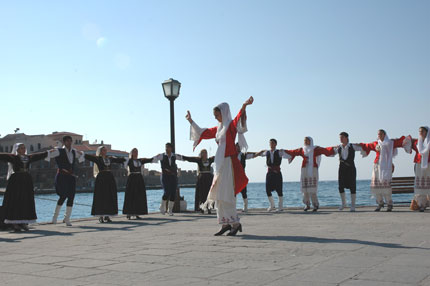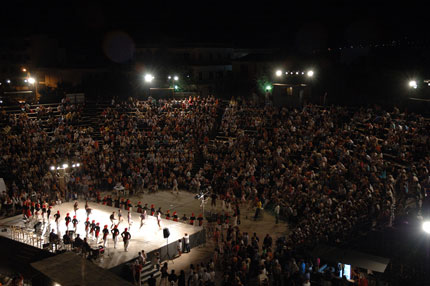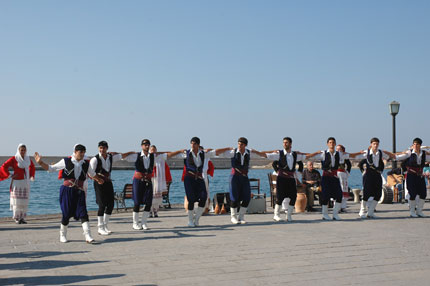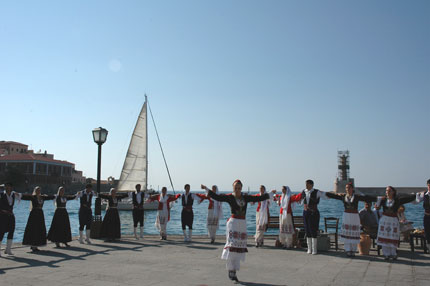
Cretan Dancer
The Cretan dances have their roots as far back as Minoan Crete. In the Archaeological Museum of Iraklion one can see statues of dancing Minoans. The Cretan dances are often fast and war-like, many being danced by groups of men. They represent the elements of the fast-moving sea and the wild nature of the Cretan mountains. The dances involving women are more traditional wedding or courtship dances.
The best places to see authentic local dancing is the panigiria. There are also many organized exhibitions during the summer and it is easy to find one to attend.
The popular film Zorba the Greek has introduced the music of Crete to many people even before they visit the island. Later the visitor will be exposed to the Cretan music and dance either through organized folk exhibits, local celebrations (panigiria), weddings or baptisms. Music and dance are very much part of modern Crete’s celebrations, as they were in ancient times. The instruments and dance steps are, in some cases, thousands of years old. The traditional instruments and dances of Crete are learned, with enthusiasm by the children and thus, a vital link between generations is cultivated.
Cretan dancing is known for its vitality. A famous Cretan dance is the Pentozali. The Pentozali, danced throughout Crete, was done by armed warriors during ancient times. The rhythm is provided by a Cretan lyre and the dancers, holding hands, start dancing slowly in a circle. As the music quickens, so do the steps and the dance reaches a frenzy speed, ending suddenly when the lyre does.
Another well-known dance is the Syrtos. The Syrtos is lead by a dancer who skilfully and energetically leads the group. The leader provides the initiative for the dance and will do a variety of complicated steps, while being supported by the line of backup dancers, doing more mild steps.
The Sousta, a third well-know Cretan dance, is traditionally a courtship dance and therefore is performed by couples. Some historians believe that the Sousta derived from ancient Greek pyrric or war dances that mimicked battle manoeuvres. The name Sousta means spring and refers to the up and down movement of the dancers, who are moving with a bouncing motion on the balls of thier feet and with small light steps. A traditional form of the Sousta, the Roumatiani Sousta, is performed by men and is very pyrric in form.
The Pidikto is another famous Cretan dance performed throughout Crete. The pidikto is know as the fastest and wildest of the Cretan dances. The word pido comes from the ancient Greek word for leap or jump and this defines the dance. The leading male dancer will leap in the air, hitting his thigh and boots, supported only by a handkerchief held by the second dancer. As the lead dancer tires, another man replaces him, who seems intent on leaping higher and more often then the previous! The base of the music for the Pidikto is, of course, the Cretan lyre.
Photos of Traditional Cretan Dances and Dancing:

Cretan Night

Cretan Dancer

Cretan dance troupe

Cretan dance troupe

Kretan Dancerin

Cretan Dancer
| < Предыдущая | Следующая > |
|---|






